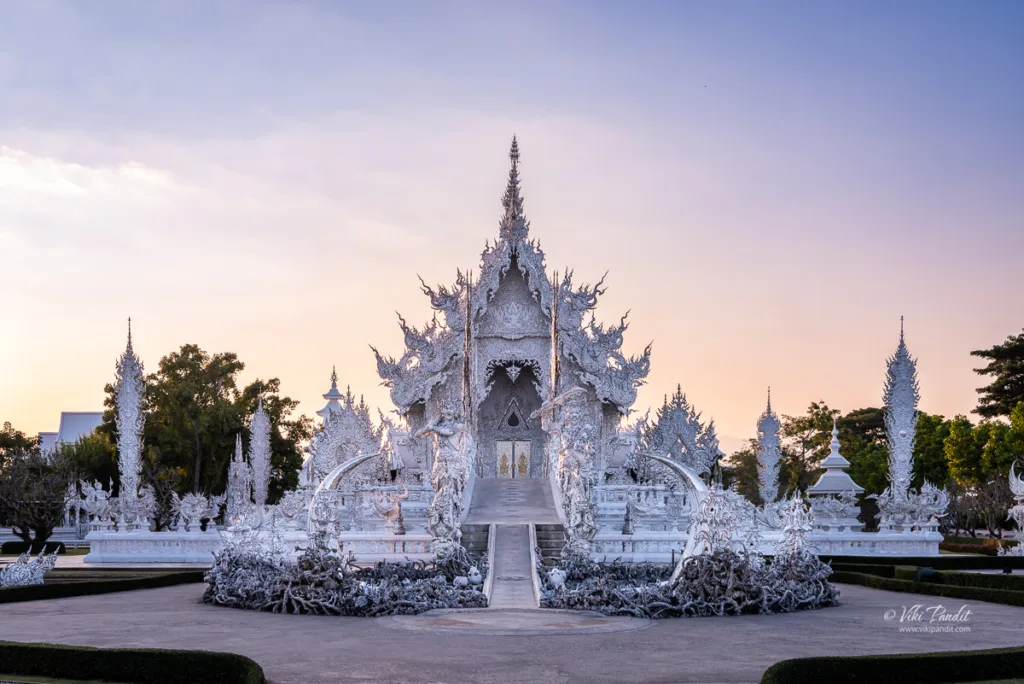
The Dazzling White Temple: Wat Rong Khun
Wat Rong Khun, or the White Temple, is a contemporary Buddhist temple in Thailand, designed by artist Chalermchai Kositpipat. The temple is renowned for its unique design blending traditional Thai elements with modern artistic expressions.

